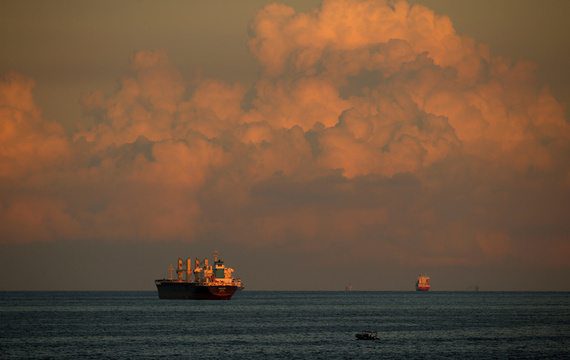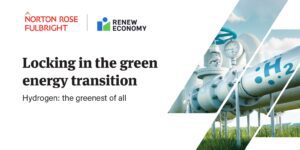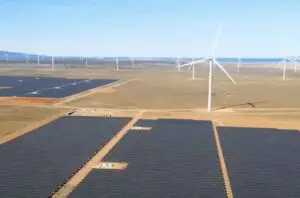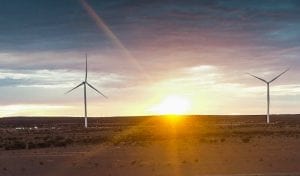A new university spinout says powdered hydrogen could deliver the efficiencies needed to make the transport and export of green hydrogen competitive with fossil fuels.
Australia has high hopes of becoming a green energy export superpower, partly driven by the potential of green hydrogen. But some of the more ambitious proposals look doubtful because of the extremely high cost of transporting the gas.
The new idea from Curtin University in Perth is now housed in Kotai Energy, a startup that is pitching the powder as a potential export material for hydrogen and which this week secured a $5 million grant from ARENA to keep investigating the idea.
Much of the Kotai science is not new: Sodium borohydride, a white powder, was synthesised in the 1940s as a good way to transport hydrogen at ambient temperatures: drop it into water, perhaps with an alkaline catalyst, and the hydrogen quickly bubbles off.
But despite some interest from the US military after World War II and its later application in metal recovery and pharmaceuticals, the use of sodium borohydride as a transportation vehicle for hydrogen energy stalled, for some very good reasons: It’s expensive to make and the waste byproduct sodium borate is expensive to recycle.
As a transportation material it was dealt what looked like a death blow in the 2000s when the flagship US Millenium Cell hydrogen concept car was killed off in 2007, when an independent panel for the Department of Energy unanimously said the project was a “no-go” for further funding.
The problem was that the car had to bring its own water with it and then recycle the waste product to keep the engine fuelled, says Curtin professor and Kotai technical team member Craig Buckley.
Their system doesn’t require BYO water.
The Curtin team says it can make the sodium borohydride power with an electrochemical process fed by renewable energy, allowing them to cut a key cost. The powder is immediately ready for transport without needing the extra step of being liquefied or turned into ammonia or a liquid organic hydrogen carrier, as electrolyser hydrogen is.
“What we want to do is send that powder to our overseas destination, say Japan for instance, where we add water and a catalyst and the hydrogen is released. You not only get hydrogen from the powder but also from the water, so you get double the amount,” Buckley says.
“If you assume a powder packing of 60 per cent on the ship, when you add the water you basically get a higher volumetric density than ammonia by 20 per cent, and double that of liquid hydrogen.”
Where one tonne of ammonia delivers 178kg of hydrogen, one tonne of sodium borohydride and 1.9 tonnes of water delivers 213kg of hydrogen at the other end.
The waste byproduct sodium borate is returned on the ship to be juiced up using a proprietary catalyst – Buckley says they’re currently testing a few – and the electrochemical process.
Recycling the sodium borate is 20 times cheaper than making sodium borohydride new, the company says.
The Holy Grail: cheap hydrogen transportation
The Kotai Energy team think that by delivering a minimum of 20 per cent more hydrogen and not having the extra steps of liquefaction that gaseous hydrogen needs for long distance transportation, they can make their powder much more cost effective than the current lowest-cost carrier material ammonia.
Buckley says electrolysers use 54 kilowatt hours (kWh) of electricity to make 1kg of hydrogen, and their “ideal minimum” is 47 kWh. They aren’t there yet, but that is what the ARENA grant, alongside the $2.5 million from industry partner Velox Energy Materials and $1 million from Curtin University is for.
Exports are the new company’s main game, but Buckley has his eye on vehicle refilling stations as well – and possibly the extinction of electrolysers.
“When you do add water to sodium borohydride you produce the hydrogen and what happens is – we have done it in the lab to prove this – we can get up to really high pressures, higher than an electrolyser plant,” he says.
“We’ve got up to 1000 bar in the lab and it can go higher than that. By adding that water in the presence of a catalyst you can go as high as you like.
Refilling stations fed by electrolysers must use clunky ionic compressors to lift the pressure of the newly produced hydrogen from 20 bar to that required by the vehicle at the pump. The Kotai science might be able to do that just with a catalyst alone, allowing drivers to put in the pressure they want themselves at the pump.
“If we can get this working, it could even replace electrolysers,” Buckley says.








